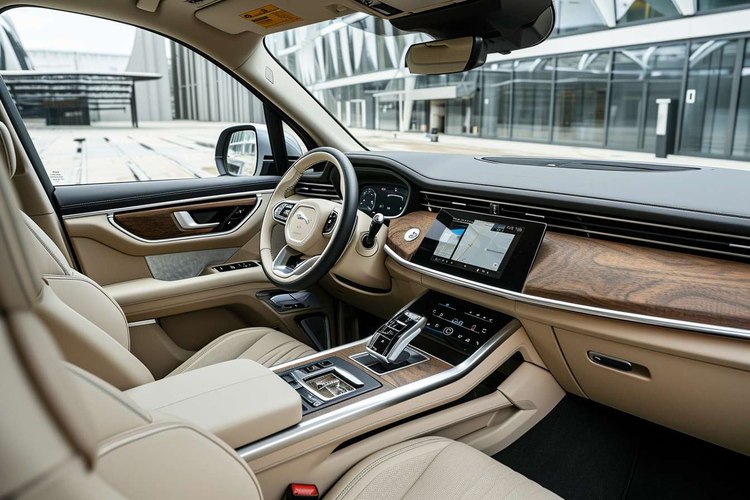What’s New in the 2026 Ford F-150?
The 2026 Ford F-150 arrives with a refreshed design, smarter tech, and improved capability, building on its reputation as America’s best-selling truck. Ford has updated the exterior with sharper styling, introduced upgraded hybrid and gas powertrains, and expanded its suite of driver-assist and connectivity features. The result is a more refined, more efficient, and more versatile F-150 built to meet the demands of modern truck owners.

Even without final specifications, it’s possible to evaluate where a new model year often changes and how those updates could matter in daily driving across the United States. Below is a guide to reading spec sheets and window stickers carefully when the 2026 F-150 information is released, so you can quickly understand what’s genuinely new and how it affects capability, comfort, and ownership.
Enhanced Powertrains and Performance: what should you check?
If the engine lineup continues from recent model years, look for details on calibration updates, revised cooling, or accessory changes that can influence torque curves, throttle response, and towing ratings. When official numbers are available, compare SAE horsepower and torque across trims and verify whether tow and payload figures have shifted, even slightly. Small changes in axle ratios, tire specs, or cooling packages can alter performance metrics more than expected.
Fuel economy is another area to watch. Once EPA estimates post for the 2026 lineup, check whether highway, city, or combined ratings have moved and whether any changes apply only to specific wheels, tires, or trims. If a hybrid configuration remains in the mix, pay attention to how the power delivery is described (for example, improved low-speed response or enhanced regenerative braking). Also read the fine print on maximum towing with hybrids versus gas-only variants, as accessory and battery packaging can affect ratings.
Braking, ride, and handling can see incremental improvements via retuned dampers, updated bushings, or steering software refinements. When test-drive reports become available in your area, note comments about steering feel on-center, body control with and without payload, and braking distances with a trailer. If off-road packages are offered, verify any changes in ground clearance, approach/departure angles, and tire construction, as these elements shape real-world durability on rutted work sites and trails.
Updated Technology and Connectivity: what’s changing?
Expect the spec sheet to clarify the size and resolution of digital displays, the processor powering the infotainment system, and whether over-the-air updates continue to cover both vehicle functions and the multimedia suite. Pay close attention to the length of included connected services and what becomes a paid subscription after the trial period ends. If the telematics hardware has been updated, confirm which cellular standards it supports and whether coverage is robust in rural regions across the U.S.
Smartphone integration remains central for many owners. Check if wireless Apple CarPlay and Android Auto are standard across more trims and whether wired connections are still available for those who prefer them. Note the number, location, and power output of USB-C ports, any household-style outlets in the cabin or bed, and whether wireless charging pads have higher wattage and better device cooling—small tweaks that make day-to-day use smoother for commuting and jobsite tasks.
Advanced driver-assistance systems (ADAS) deserve close scrutiny. Look for updates to adaptive cruise control behavior in traffic, lane-centering performance on curvy highways, and blind-spot monitoring tuned for trailer widths. If hands-free or lane-change assist features are listed, verify the scope of road coverage in the United States, camera/sensor cleaning strategies, and the presence of a driver-monitoring system. Also confirm whether map data and feature functionality require a paid plan after an initial trial.
Refreshed Design and Practical Improvements: where might you notice differences?
Exterior updates for a new model year often emphasize lighting signatures, grille textures, wheel designs, and functional aero. When photos and specs are official, look for changes to headlight beam patterns, fog-lamp performance, and bed lighting that improves visibility at dusk. If the tailgate system evolves, check whether any new steps, grab points, or integrated work surfaces are rated for specific weights and compatible with bed accessories you already own.
Inside, materials and storage solutions can make a meaningful difference during long days on the road. Compare seat foam density, available upholstery, and any noise-reduction measures such as acoustic glass or added insulation. Note if the rear under-seat storage, console configuration, and door-bin shapes have been rethought to fit common tools, water bottles, laptops, and safety gear. For families, look for easier child-seat anchoring and clearer LATCH access.
Practicality extends to towing and payload. Once the official guide is out, verify the exact configuration used to claim max ratings (cab style, bed length, drivetrain, axle ratio, and tire choice). Confirm integrated trailer-brake controller availability, camera views for hitching, and the presence of guidance lines or auto-backing aids. For owners working in cold or hot climates, details like battery warm-up strategies, remote start logic, and heavy-duty alternators can be decisive for reliability and comfort.
In summary, the real story of what’s new in the 2026 Ford F-150 will be told in the footnotes as much as the headlines. Watch for fine-grain changes to calibration, connectivity hardware and service terms, lighting and storage touches, and the precise configurations tied to capability claims. Reviewing these details carefully—once Ford releases the U.S.-spec information—will help you understand how the 2026 model could fit your workload and daily driving without surprises.




